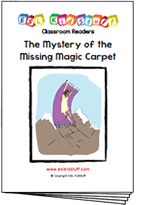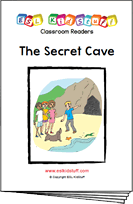Adverbs of frequency lesson plan
Stand-alone lesson ESL kids lesson plan
Lesson plans for ESL kids teachers
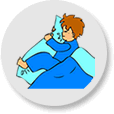
Adverbs of frequency
In this lesson students will practice saying adverbs of frequency, ask their classmates lots of questions and read a fun story.
Members get accompanying worksheets and classroom reader.
Download materials:
Our lesson plans are FREE!
Sign up for accompanying:
✔ worksheets
✔ homework sheets
✔ craft sheets
✔ flashcards
✔ song downloads & videos
✔ classroom readers & videos
Click to see lesson details, materials and supplies
Time: 40 mins – 1 hour
Objectives: Saying how often you do things with adverbs of frequency.
Structures: “Do you …?, “How often do you …?”
Target vocabulary: always, almost always, often, usually, sometimes, rarely, hardly ever, almost never, never.
Lesson materials
Printables:
- Adverbs of frequency questionnaire
- Adverbs of frequency write worksheet
- Reader worksheet
Readers:
- The mystery of the missing magic carpet
Additional materials:
- Adverbs of frequency vocab crossword
- Adverbs of frequency vocab word search
- Adverbs of frequency questions worksheet
Supplies:
- [hide_on_uk]colored[/hide_on_uk][hide_on_us]coloured[/hide_on_us] pencils
- cards with the adverbs of frequency written on them: always, almost always, often, usually, sometimes, rarely, hardly ever, almost never, never (see point 3)
- Blu-Tack or tape to stick the frequency adverbs cards on the board (see point 3)
- board with marker / chalk
In this lesson students will practice saying adverbs of frequency to indicate how often they do certain activities. It is an action-packed lesson with lots of fun action activities.
Important: This lesson uses days of the week vocabulary so make you you have taught the Days of the week lesson before this one.
Adverbs of frequency are used to say how often we do things or how often things happen. Here are some common adverbs of frequency (in order from most frequent to least frequent):
- always (do 100% of the time – e.g. She always drinks coffee in the morning.)
- almost always / nearly always
- often
- usually / frequently
- sometimes (do approximatley 40%-60% of the time – e.g. I sometimes go for a walk in the evening.)
- occasionally
- rarely / seldom
- hardly ever / almost never
- never (do 0% of the time – e.g. He never passes his English test.)
Adverb position
An adverb of frequency goes before a main verb in a sentence:
- I often play tennis on Sundays. (subject + adverb + main verb)
However, the exception is when the sentence contains the verb ‘to be‘. In this case it goes after the verb:
- I am usually hungry after school. (subject + to be + adverb)
In addition, when there is an auxiliary verb (e.g. have, will, must, might, could, would, can, etc.), the adverb is placed between the auxiliary verb and the main verb.
- She can almost always beat her brother at chess. (subject + auxiliary + adverb + main verb)
These adverbs of freqnecy can also be used at the beginning of a sentence:
Usually, normally, often, frequently, sometimes, occasionally
- Sometimes, I go shopping on Sundays.(adverb + subject + main verb)
Lesson procedure:
Warm up and maintenance:
The beginning of your lesson is extremely important: this is where you set the tone of your lesson and get everyone in the right frame of mind for learning English. It is also an opportunity to check homework and review previous lessons.
Click for warm up suggestions for the start of your lessons
These activities can be done in the following order at the start of your lesson:

1. Greetings and name tags
Greet the students by name as they enter the classroom and gesture for them to sit down. Before class prepare some blank name tags (stickers or pin-on tags). Give these out and have everyone write their names and put their tags on. If you use pin-on tags, you can keep and give out every class.

2. Homework check
Check each student’s homework set in the last lesson. Ask each student some questions about their homework worksheet (e.g. “what [hide_on_uk]color[/hide_on_uk][hide_on_us]colour[/hide_on_us] is it?”), give lots of praise, and then put some kind of mark on the homework sheet (e.g. a sticker, a stamp or draw a smiley face). Finally, tell your students to put their homework back into their bags.
3. Review past lessons
Reviewing past lessons is very important – students need constant practice of new vocab, structures, songs, games and so on. Always review parts of your last lesson as well as some parts from other previous lessons. You can spend 5-10 minutes reviewing – it’s fine to recycle games and activities from your past lessons to review as kids enjoy playing familiar games (although be careful not to play a game to death!). See the section “Other ideas to include in your warm” below for ideas.
You can also include review activities in the main body of your lesson. Kids can have short attention spans so it’s good to be able to pull out lots of activities during different stages of the lesson.
Other ideas to include in your warm up:
Ball pass questions
This is good to review questions from previous lessons. Get everybody standing in a circle.
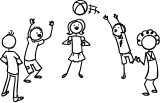
Round 1:
Take a ball and hold it and say, “My name is (you name)”. Then throw the ball to one student and say, “What’s your name?”. Students throw the ball around randomly, saying their names and asking for names.
Round 2:
This time ask a review question, e.g. “How many tables are there?”. Then throw the ball to a student who should answer, “There are (6) tables”. Help if necessary. Then that student throws the ball to another student and asks a “How many …?” question. Continue so everyone has a go. You can have multiple rounds with different topic questions.

Play “Spin the bottle”
Sit students in a circle with a bottle in the middle. Teacher spins the bottle. When it stops spinning the student it is pointing to has to answer a question. If the answer is correct then that student can spin the bottle. This is a good class warm up activity (e.g. How are you? What’s your [hide_on_uk]favorite[/hide_on_uk][hide_on_us]favourite[/hide_on_us] food? How’s the weather today?, etc.

Play “Vocabulary basketball”
This is a fun game which reviews vocabulary from previous lessons. You will need a basket (a trash can) and 2 balls (or 2 pieces of A4 paper scrunched up into balls).
Form 2 teams and line them up so that two players from each team are facing the front with the basket in front of them. Let both players throw their ball – if they get their ball into the basket they can try and win a point by giving the correct answer to a question the teacher asks. This can be an actual question (e.g. What are you wearing?) or a flashcard (What’s this?). Then they go to the back of the line. At the end, the team with the most points is the winner!
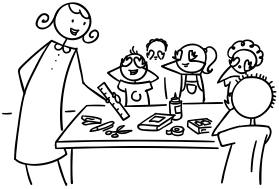
Play “What’s missing?”
This is a fun review memory game – students will have to try to remember review objects from previous lessons (e.g. classroom stationery). Lay the objects out on a table for all to see. Allow the students a minute to memorize the positions of the objects. Remove an object and hold it behind your back. Say, “Open your eyes!” – the first student who can shout out the missing object wins a point for his/her team. Play for all the objects.
Finally, calculate which team has won the most points and give them a round of applause.

Play “Quiz game show”
This is a fun quiz game, like a simple version of a TV game show. Draw some circles on the board and randomly write numbers 1, 2 or 3 in each circle. These will be points.
Put students into teams. Then ask the first team to choose a number – 1 is an easy question (e.g. “Do you like bananas?”) and 3 is a difficult question (e.g. point at a clock and ask, “What time is it?”). 2 will be in between in terms of difficulty. When the question has been answered correctly, erase that number circle. Play until all the number circles are gone – the team with the most points is the winner!

Read a classroom reader again
As you progress through the lessons you will start to build up a catalog of classroom readers (see our Readers download page at https://www.eslkidstuff.com). Kids love going back to old stories and reading through them again. Invite a student to pick a classroom reader and read through it as a class. Make the story as interactive as possible by asking questions (e.g. what [hide_on_uk]colors[/hide_on_uk][hide_on_us]colours[/hide_on_us] there are, the names of different objects, etc.) and getting students to speculate what is going to happen next in the story.

Talk about the weather (do after you have taught the weather lesson plan).
- Prepare a weather board. Before the first class prepare a piece of cardboard and cover it with felt – you are going to pin this to the wall. If you can, try and get blue felt (to represent the sky). Write at the top in large letters, “How’s the weather today?”. Below that write “Today it’s”. Cut out weather pictures (such as our weather flashcards) and stick some velcro on the back. Arrange the weather pictures around the edge of the board and then put the board on the wall of your classroom. You can now use this weather board at the beginning of every lesson.
- Ask about the weather. Ask, “How’s the weather today?” and have students put up their hands. Allow one weather condition per student (e.g. “It’s rainy”) and have each student come up and put a weather picture on the weather board.
- Introduce more weather vocabulary. Depending on weather conditions, you can introduce more weather words (with pictures … you can get students to draw them), such as:
- stormy
- misty
- showery
- freezing
- humid
- frosty
- icy
- drizzly
New learning and practice:
1. Review days of the week and play ball toss
To begin, get everybody standing up and toss a ball to a student who tosses it to another student and so on around the class – let everyone have fun for a minute throwing the ball around the class and trying not to let it drop on the floor.
Next, have a student toss the ball to you and as you catch it shout, “Monday”. Toss the ball to another student and encourage him/her to shout, “Tuesday” as they catch it. Continue with the days of the week being shouted out in the correct order, going around the class. If the ball is dropped or the wrong day is said you must start again with Monday. Set a target of 3 or 4 fast rounds without mistakes or dropping the ball.
2. Discuss the best day of the week
Get everyone to sit down. Write on the top of the board, “The best day of the week is” and ask the class for their answers. Most probably it will be Saturday or Sunday. Take a vote for the most popular answer and write this on the board, for example:
The best day of the week is Saturday
Next, ask why it is the best day of the week and encourage students to shout out answers. Write the things they do on the board as they are shouted out, for example:
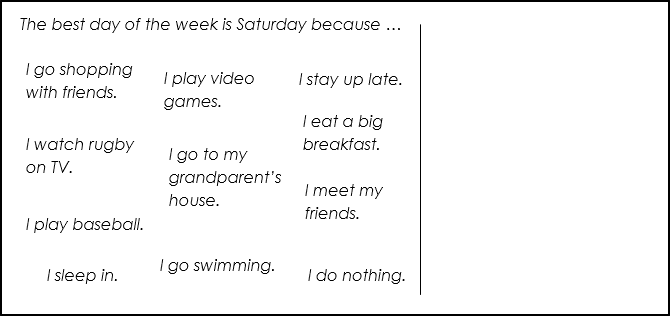
3. Introduce the adverbs of frequency
Choose one of the activities on the board, such as “I go shopping with friends”. In the space on the right-side of the board write, “On Saturdays, I _________ go shopping with friends”.
Then under this, draw a vertical line with 0% at the bottom and 100% at the top to make a frequency chart, as follows:

Then point to yourself and point at the 0% and shake your head to indicate that you never go shopping with friends on Saturdays.
Next, get a few volunteers to come up to the board and point on the vertical line where their answer would be (e.g. around 50% for sometimes, 70% for often, etc.).
At this point we’ll add the frequency adverbs to the chart. Before class, prepare cards with the adverbs of frequency written on them (always, almost always, often, usually, sometimes, rarely, hardly ever, almost never, never). Put the “never” card at 0% on the board. Say, “I never go shopping with friends on Saturdays”.
Give the rest of the cards to different students and ask them, one-by-one, to come to the board and place them where they think they would go on the chart. As each student guesses, get everyone to help by saying “higher!” or “lower!”. Keep having students come up to the board with their cards until you have a completed chart:
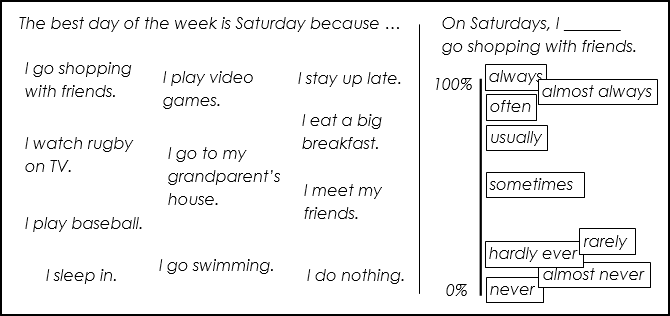
Go around the class asking everyone to say how often the go shopping using the full structure (e.g. “On Saturdays, I often go shopping with friends.”)
Put students into small groups of 3 or 4 and get them to say how often they do all the activities written on the board. Circulate and help out with mistakes.
Finish by asking a few students some questions, for example,
Teacher: Frank, how often do you go swimming on Saturdays?
Student: On Saturdays, I hardly ever go swimming.
Teacher: Good job! Helen, how often do you sleep in on Saturdays?
Student: On Saturdays, I always sleep in.
etc.
4. Do the “Adverbs of frequency questionnaire”
Put students in pairs. Give out the A/B pair worksheets and allow a couple of minutes for everyone to check for vocabulary issues. Then start the activity – everyone asks their partners the questions from the questionnaire and records their answers. At the end, have your students tell the class about their partners.
5. Play the “Climb the frequency ladder” game
On the board write the title “Climb the ladder” and draw a ladder with 9 rungs, running from the top of the board to the bottom.
Label each rung with the adverbs of frequency from today’s lesson, with “never” on the bottom rung and “always” on the top, for example:
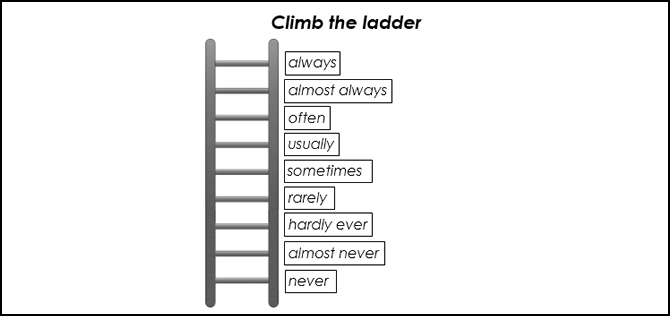
Get everyone to stand up and find a partner. Tell the class that everyone starts on the bottom rung of the ladder and to win they must reach the top rung. They do this by asking their partner questions, trying to elicit the response for the rung of the ladder they are on. For example, for the bottom rung, they must get their partner to answer “never”:
Student A: How often do you cook dinner?
Student B: I never cook dinner.
If the answer is “never” the student moves up to the next rung (“almost never”), changes partners and asks questions to elicit the next adverb. However, if the answer is wrong, they get knocked down a rung of the ladder. They are allowed to ask questions to the same partner if they are knocked back down, but once they get to a higher rung they must change partners again. The student who gets to the top of the ladder first is the winner.
6. Read classroom reader “The mystery of the missing magic carpet”
Let’s end the lesson with a fun story! Before class, download and print off the reader “The mystery of the missing magic carpet”. As you go through each page, point to the pictures and elicit what everyone thinks is happening, for example:
Teacher: (pointing at the picture on page 3) Oh dear, Maria doesn’t look very happy, does she? What do you think is wrong?
Student: Her pencil is on the floor?
Teacher: Yes, it is on the floor. But why is Maria unhappy?
Student: Did she lose her pencil?
Teacher: Maybe! Let’s check (reading … ) “This was strange. I hardly ever lose things. Last year, I lost a pencil but that is the only thing I have ever lost.” Yes, you are right! Well done!
etc.
Get the students really involved in the story by asking lots of questions and getting them to speculate about the story and using adverbs of frequency.
After reading the story, give out a reader worksheet to each student and have everyone try to remember which adverb is used in which part of the story and fill in the answers on the worksheets. Then go quickly go through the story again, checking the answers.
Alternatively, watch our video version of the reader (Internet connection required).
Wrap up:
Assign homework: “Adverbs of frequency write” worksheet
Click for wrap up suggestions for the end of your lessons

1. Assign homework
Each week give out a homework worksheet for your students to take home. Hold up the homework worksheet and model how to do it. Give out the worksheets and say, “Put your homework in your bags”.

2. Do “Quick check”
Time to leave the class. Make sure everything is put away and the students have gathered their belongings. Have them line up at the door and place yourself between the door and the students. For each student check one new word or phrase, for example:
- hold up an object or flashcard (such as an item of clothing) and ask, “What’s this?”
- ask a question from the lesson (e.g. “Where do you live?”, “Do you like bananas?”, “Can you play chess?”, etc.)
When they give you the correct answer say goodbye and let them leave. If their answer is wrong, have them go back to the end of the line – they will have to try again once they reach the front!
Other lesson plans
Actions, verbs & tenses:
- Can – for ability
- Morning routines
- Daily routines & times of the day
- Actions – Present continuous
- Future plans using “going to”
- Past tense activities – Regular verbs
- Past tense activities – Irregular verbs: Part 1
- Past tense activities – Irregular verbs: Part 2
Adjectives:
- Describing people
- Describing things
- Comparing things (Comparative adjectives)
- Comparing things (Superlative adjectives)
Adverbs:
Alphabet:
Animals:
Body:
Classroom:
Clothes:
Colors:
Colours:
Directions:
Family:
Feelings & emotions:
Food:
Health & sickness:
Holidays & festivals:
Jobs:
Likes, dislikes & favorites:
Likes, dislikes & favourites:
- Likes & dislikes
- [hide_on_uk]Favorites[/hide_on_uk][hide_on_us]Favourites[/hide_on_us] and asking why
Nature & Our world:
Numbers:
Places & where we live:
Prepositions of location:
Pronouns:
Shapes:
Shopping:
Sports:
Time, days, months, seasons:
Toys:
Transport & travel:
Weather:


